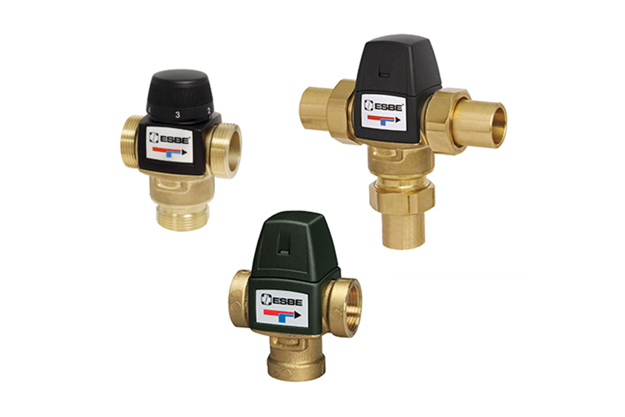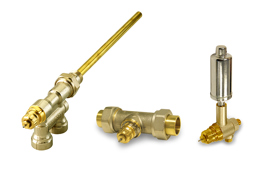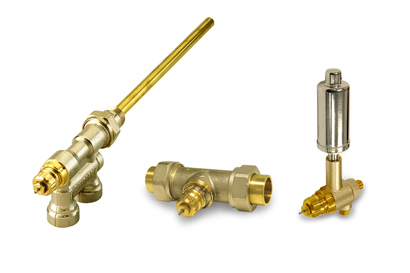
The Interchurch Center
The Interchurch Center, located in the Morningside Heights section of New York City’s Upper West Side and managed by Newmark Grubb Knight Frank (NGKF), serves as headquarters for a number of nonprofit organizations. Inspired by the building’s original mission to provide affordable office space and facilitate communication and cooperation among the many religious organizations that would have offices there, John D. Rockefeller, Jr., played a pivotal role in the building’s construction. In addition to gifting the property on which the building sits, he contributed large sums of money to the building fund, along with special monetary gifts earmarked for the cost of the underground garage and the Alabama limestone that encases the structure.
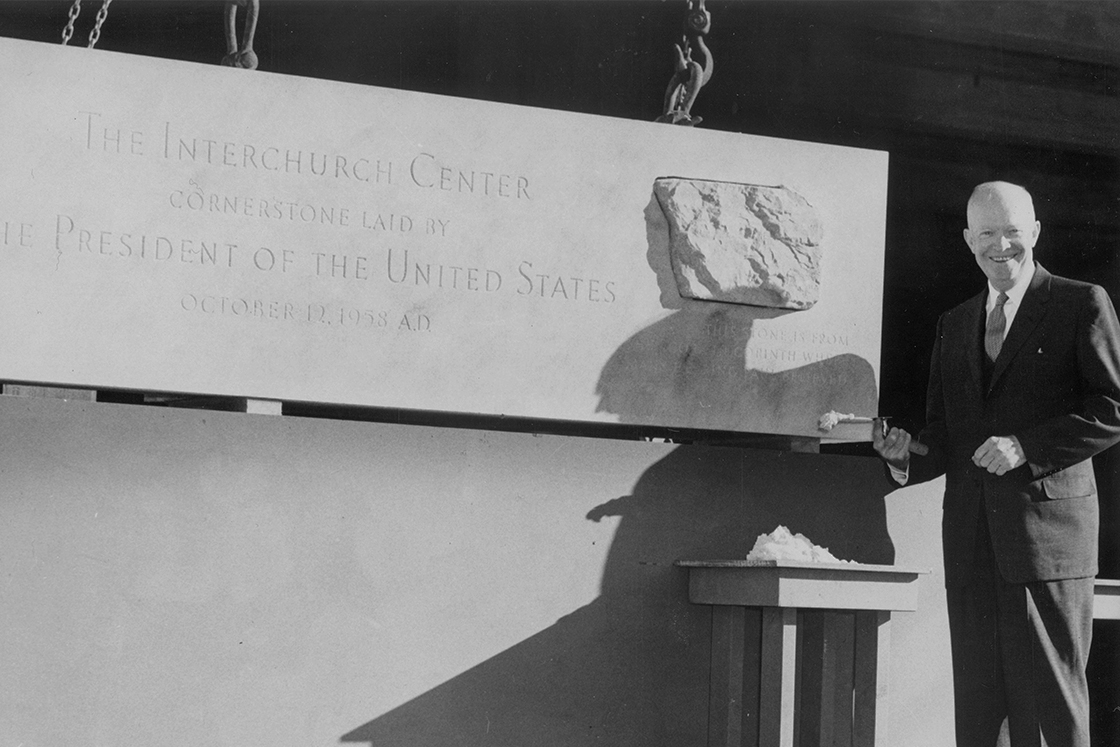
President Eisenhower lays the cornerstone
A crowd of more than 30,000 people gathered in 1958 for a cornerstone laying ceremony, which included remarks by then President Dwight D. Eisenhower. The cornerstone, which weighs 2.5 tons, included a carved niche containing a stone from Corinth, Greece, mortared into place by President Eisenhower, and a sealed bronze box filled with a variety of historical documents. Today, the 19-story building, whose construction so many celebrated, houses more than 70 nonprofit organizations, including a wide variety of church agencies, intercultural groups, and community development foundations.
Like many buildings constructed prior to 1970, the Center’s heating, ventilation, and air-conditioning system relies on a two-pipe hot/chilled water changeover system with induction units — some 1,270 of them — to provide the final step in controlling the comfort level and temperature throughout the building. Located beneath every window in the 600,000-square-foot building, the units were nearing the end of their useful life when George D’Amato, the Center’s chief operating engineer, joined the NGKF Engineering Group in 2000.
“Our tenants were calling about comfort, especially in the winter when they were too warm,” said D’Amato. “We could turn the heat on and we could turn it off, but our 70 tenants had no way of controlling the temperature in their individual offices. In many cases, they were blasted with heat — a very inefficient use of energy. In addition, the induction units were failing, and the cabinets built around them made it next to impossible to remove them in order to change air filters or adjust the water flow in an effort to improve the room temperature. It required too much manpower and time to remove one cabinet, much less 1,270 of them.”
Photo Credit: GM-InterchurchCenter, Dwight Eisenhower Interchurch Center Cornerstone, CC BY-SA 4.0
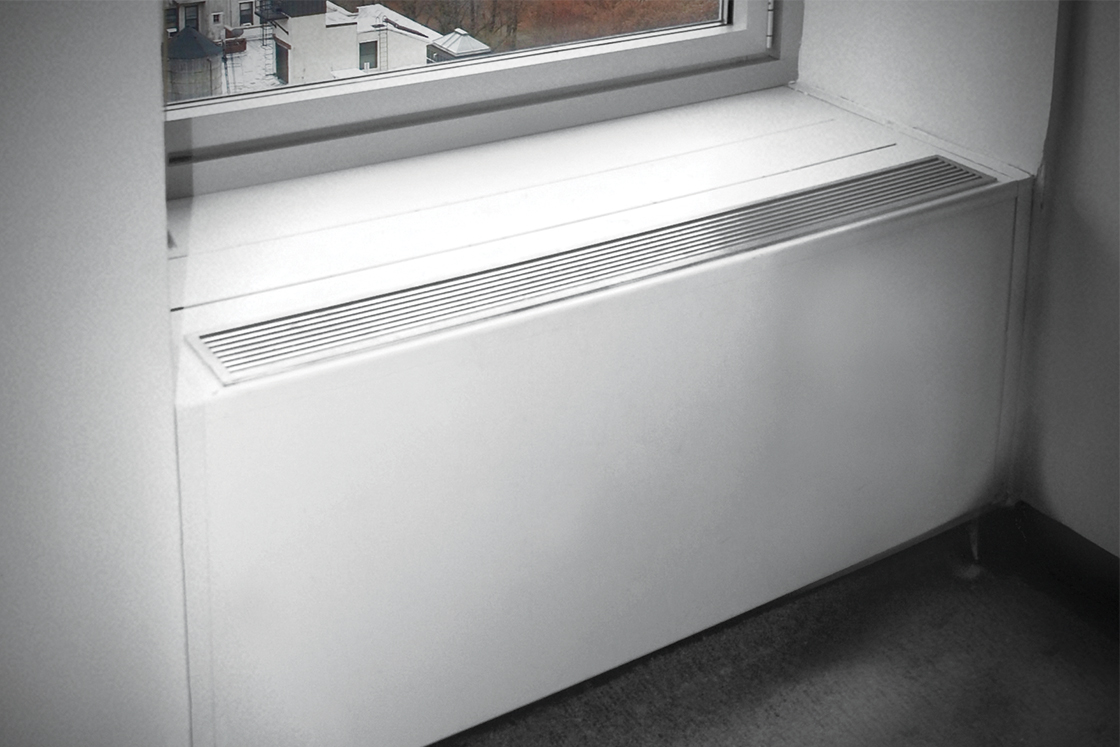
Updating building’s mechanical systems becomes a priority
D’Amato and the building’s owner realized it was time to address the problem. Fan coil units offered a solution, but it was a costly solution the owner could not afford, given the other capital improvement projects the building’s ownership was planning. Additionally, fan coil units require significant amounts of electrical power, which would increase the building’s utility expense. Instead, the building’s mechanical engineering firm engaged with engineers at Danfoss to develop a more cost-effective solution around the building’s induction system. Meanwhile, work began on the building to update its mechanical systems and create a more comfortable, energy efficient structure. This work included the installation of two new chillers, four new cooling towers, new electrical panels, a new motor control panel, new windows throughout the Center, and a building wide lighting retrofit program.
The proposed solution to the problem of aging induction units was an unusual application of three Danfoss products that do not require electricity — the VTA 572 thermostatic diverting valve, the KOVM three-way room temperature control valve, and the RA 2000 room thermostat.
The Danfoss VTA is a three-way, nonelectric thermostatic valve that senses the temperature of the supply water and feeds either the chilled water or hot water port of the KOVM room temperature control valve. This particular diverter valve has a low temperature range, providing an ideal control for a two-pipe changeover application, while delivering a cost effective means to meet application demands. The room temperature control valve, in turn, controls the flow of water to the emitter (or heat exchanger), based on the room temperature requirements as determined by the RA 2000 thermostat setting. The room temperature setting is easily accomplished by adjusting the dial clockwise or counterclockwise, using a numbered scale of 1 to 5, corresponding to approximately 57°F to 79°F. Comfort levels are achieved and system efficiency ensured because the control valve package creates a variable flow system which allows the newly installed variable speed pumps to operate at their most efficient point.

Solution eliminates complaints, increases comfort
Already familiar with the quality of Danfoss products, D’Amato was quite comfortable with the solution and confident it would work. “I’ve been using Danfoss for years, because the quality of products is important to us,” he said. “This made it easy to approve the solution they proposed.”
D’Amato and the NGKF team helped replace all 1,270 induction units. “The process began on a Thursday night when we broke the plaster walls open in an office, removed the covers from the induction units and prepared everything for the mechanical contractor. The contractor came in Saturday and Sunday and installed the new units. Then, our team patched the walls Sunday night and painted on Monday, allowing tenants to re-occupy those affected offices on Tuesday. ” This process enabled tenants to settle back into their offices with minimum disruption to their routines. In fact, since the units have been installed, all complaints about uncomfortable temperatures have disappeared. “Our tenants are comfortable during hot summer and cold winter days because now they can control the temperature in their offices and do so quite easily and accurately. This means we do not have to invest man-hours addressing tenant work orders on temperature issues. Looking down the road, if maintenance is required, the new cabinets will make it easy to access the units, pull the screen and clean the coil, helping to ensure a longer life for the system.”

Energy efficiency and the retrofit opportunity
Although other projects, most notably the installation of new windows, make it difficult to
attribute actual energy savings to the new induction unit controls, D’Amato is certain that the controls have had an undeniable impact on efforts to reduce energy costs. “Between the induction units and the windows, I was able to reduce my water temperature by 10 degrees in the heating season. That’s a significant change to make, and definitely one that is saving us money.”
Two years after the last induction unit was installed, the Danfoss solution is proving itself and reinforcing the positive opinion D’Amato already had of the company and its products. “Working with Danfoss was a pleasure. I appreciated their persistence in coming up with a solution that worked for us. Ten years ago, they were the only company with the ability to provide us with the products we needed and the willingness to work with us over the span of a decade.”
“The results have been quite positive,” he continued, “and the solution is one that makes sense for the many other buildings in New York City and around the country that are in need of similar upgrades.”
As D’Amato indicates, New York City is awash in buildings, many of them similar to the Interchurch Center, that are encouraged by the city to proactively address the need for energy efficiency through initiatives like the Greener Greater Buildings Plan. As changes to the Interchurch Center demonstrate, proven, readily-available technology exists with the ability to significantly and cost-effectively improve energy efficiency and comfort. “Induction units in buildings don’t [necessarily] have to be replaced with newer systems,” said D’Amato. “At least not when a cost-effective, energy-efficient, and easy-to-install solution like this one is available that helps to ensure year-round comfort.”

Download case study
View related products
-
if (isSmallPicture) {


 Thermostatic mixing valves
Thermostatic mixing valvesKeep water temperatures safe in point of source applications with ESBE thermostatic mixing valves, used in both mixing and diverting applications.
-
if (isSmallPicture) {


 Thermostatic radiator valves
Thermostatic radiator valvesRobustly built and designed to meet the rigors of the residential, commercial and industrial sectors, a comprehensive range of Danfoss RA2000 thermostatic radiator valves is available for hot water, one-pipe steam, and two-pipe low pressure steam systems.


